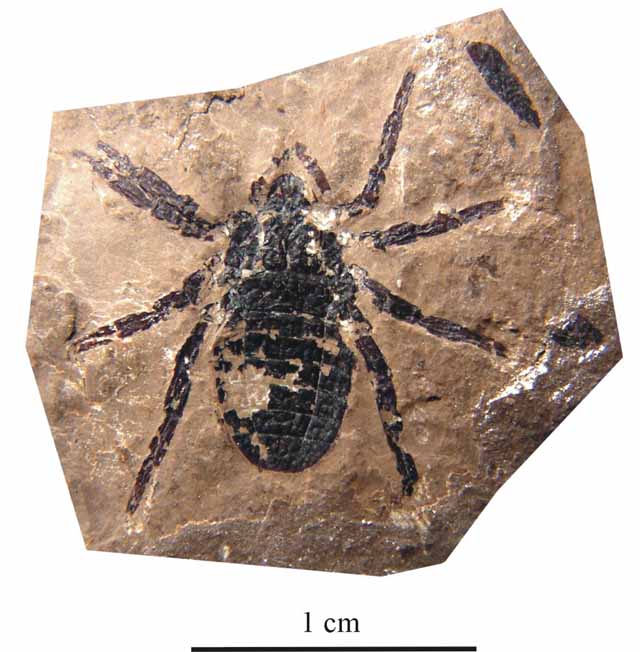 |
 |
 |
 |
 |
Produced
by the Population Genetics and Evolution class, Furman University |
||||
 |
 |
 |
 |
 |
Produced
by the Population Genetics and Evolution class, Furman University |
||||
 |
The
Silurian: Trigonotarbids |
 |
||
| Trigonotarbids
were the first completely terrestrial animals (Wagoner 1995). These organisms
most closely resembled and are most closely related to modern day spiders
(Wikipedia 2010). These organisms lived in a variety of terrestrial habitats
but were common in coal swamp ecosystems (University of Aberdeen 2010).The
oldest fossils of Trigonotarbids were found in the Silurian Ludlow Bone
Bed, and were formally described by Jason Dunlop (Trewin et al. 2010).
Currently there are over seventy different Trigonotarbid species known,
the oldest being Palaeotarbus jerami (Wikipedia 2010). Fossils
have been found in Europe and North America, the best preserved specimens
being found in Rhynie Chert of Scotland (Trewin et al. 2010). While these
arthropods were not true spiders, they are placed with true spiders in
the class Arachnida (Wagoner 1995). Trigonotarbids ranged in size from
4-20 mm (Trewin et al. 2010). They possessed eight legs with two tarsal
claws at the end of each appendage, fangs, a head and abdomen region,
and separate lateral and median eye tubercles (Trewin et al. 2010). Their
obligate terrestriality is shown by their book lungs; respiratory structures
found in terrestrial chelicerates today. Trigonotarbids lacked specialized
silk-spinning organs ("spinnerets") and therefore had to stalk
and ambush their prey-which were likely amphibious arthropods and worms
venturing forth from the water on brief forays (Wikipedia 2010). Page by Chapin Hardy |
 |
| Fossil of Aphantomartus pustulatus, a trigonotarbid. Photo Credit: Ohio State University. | |
| Trewin NH, Fayers SR, Anderson LI. 2010. Trigonotarbid arachnids. The Rhynie Chert. University of Aberdeen. Accessed February 16, 2010. Waggoner B. 1995. Trigonotarbida and their Allies. University of California Museum of Paleontology. Accessed February 16, 2010. Wikipedia. 2010a. Spider. Accessed February 16, 2010. Wikipedia. 2010b. Trigonotarbida. Accessed February 16, 2010.
|